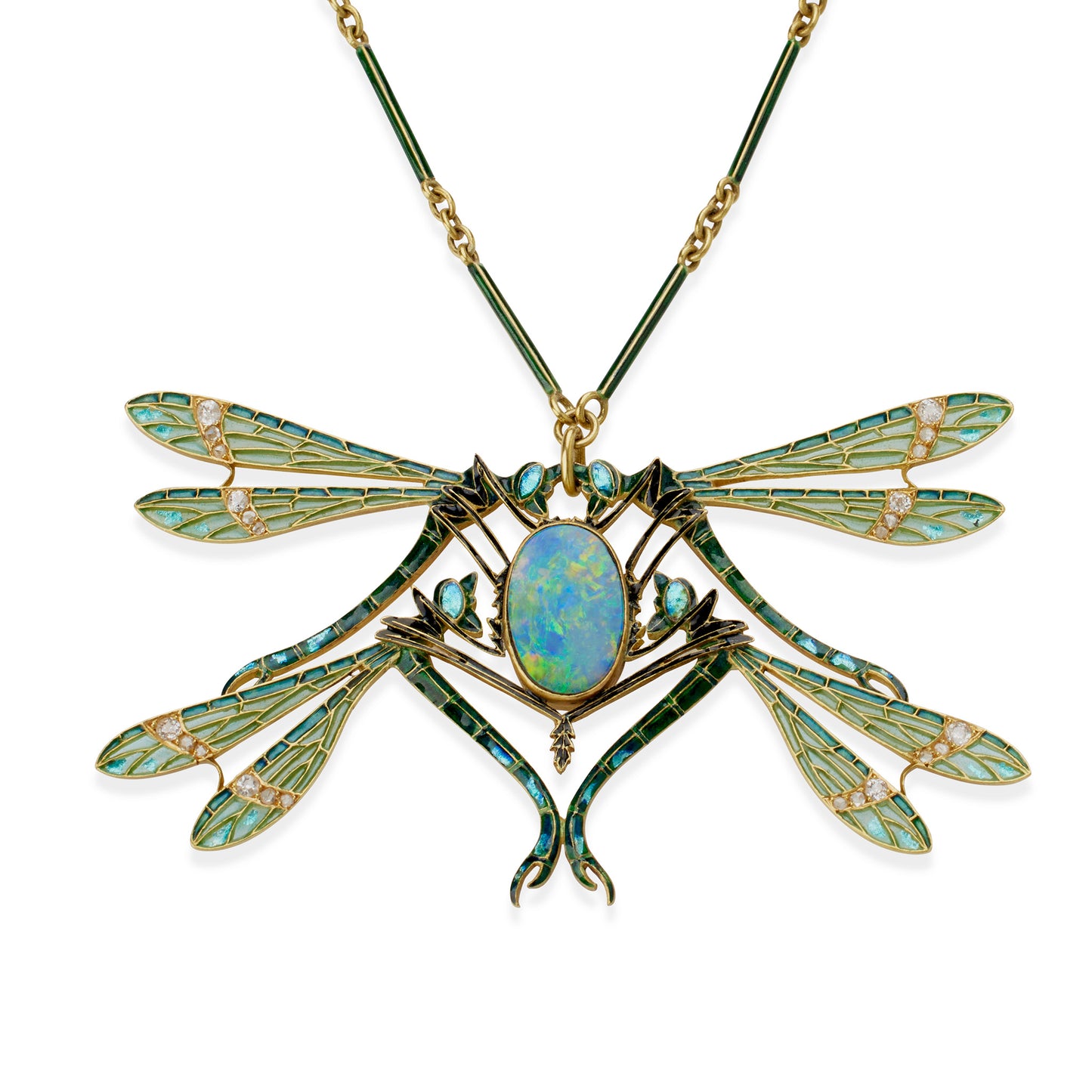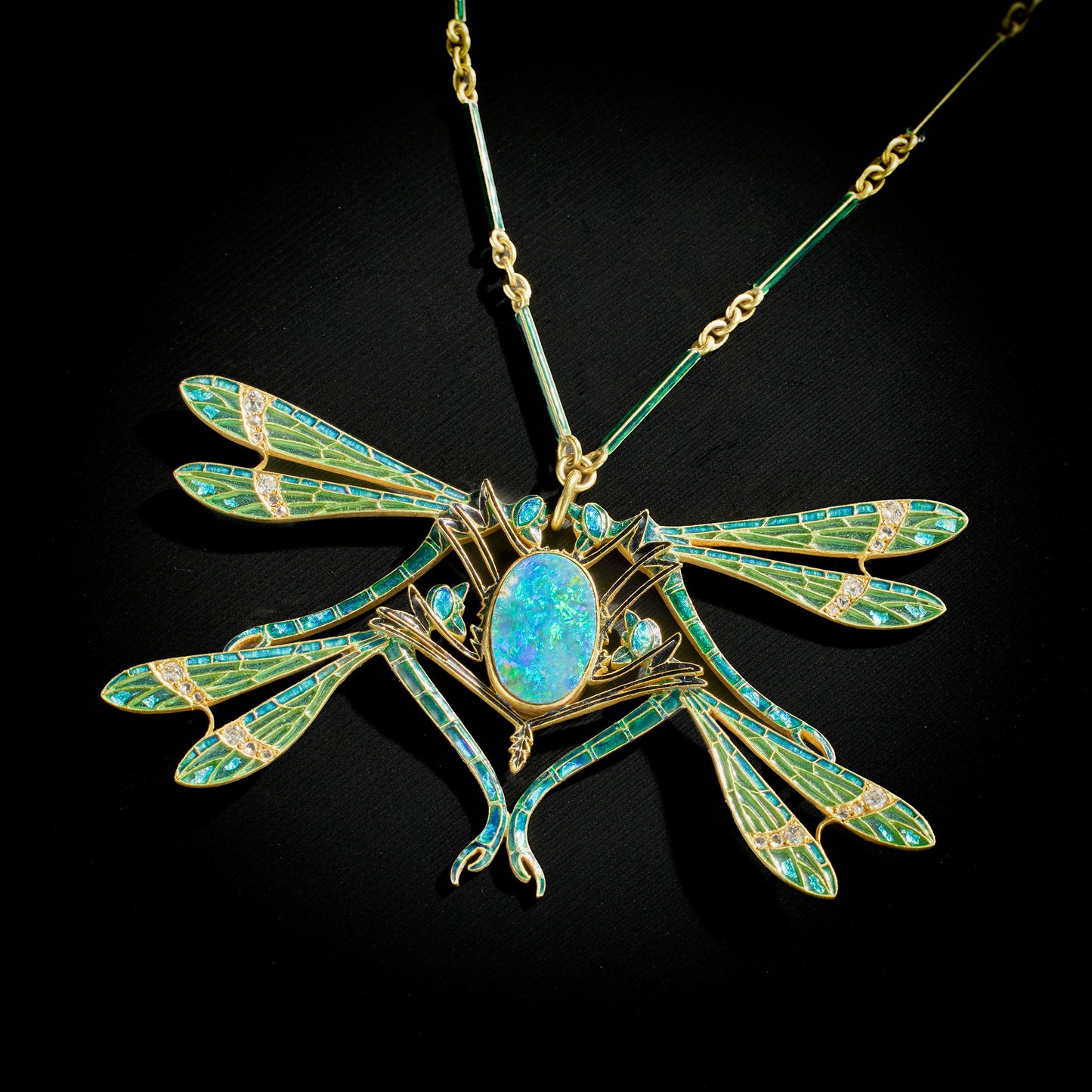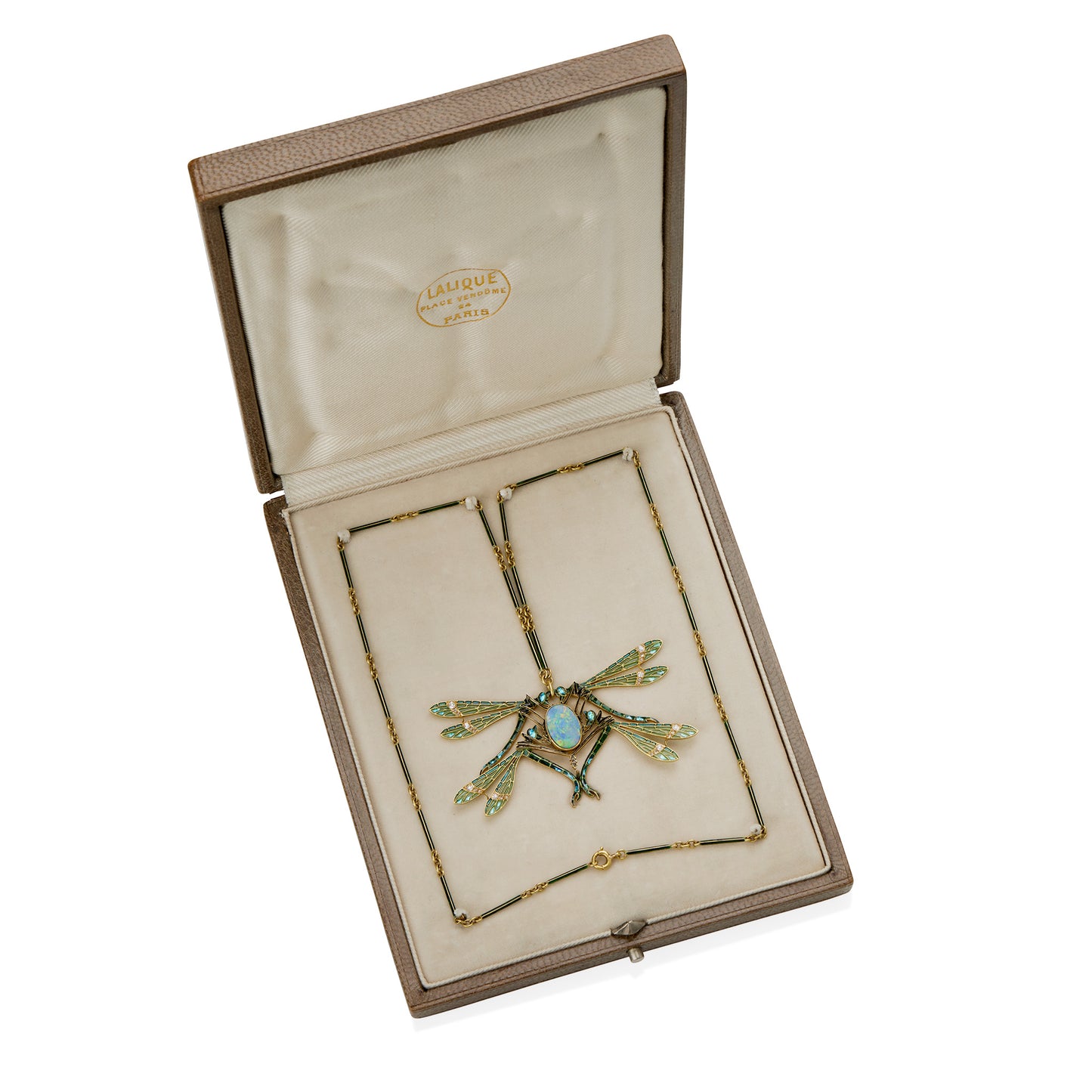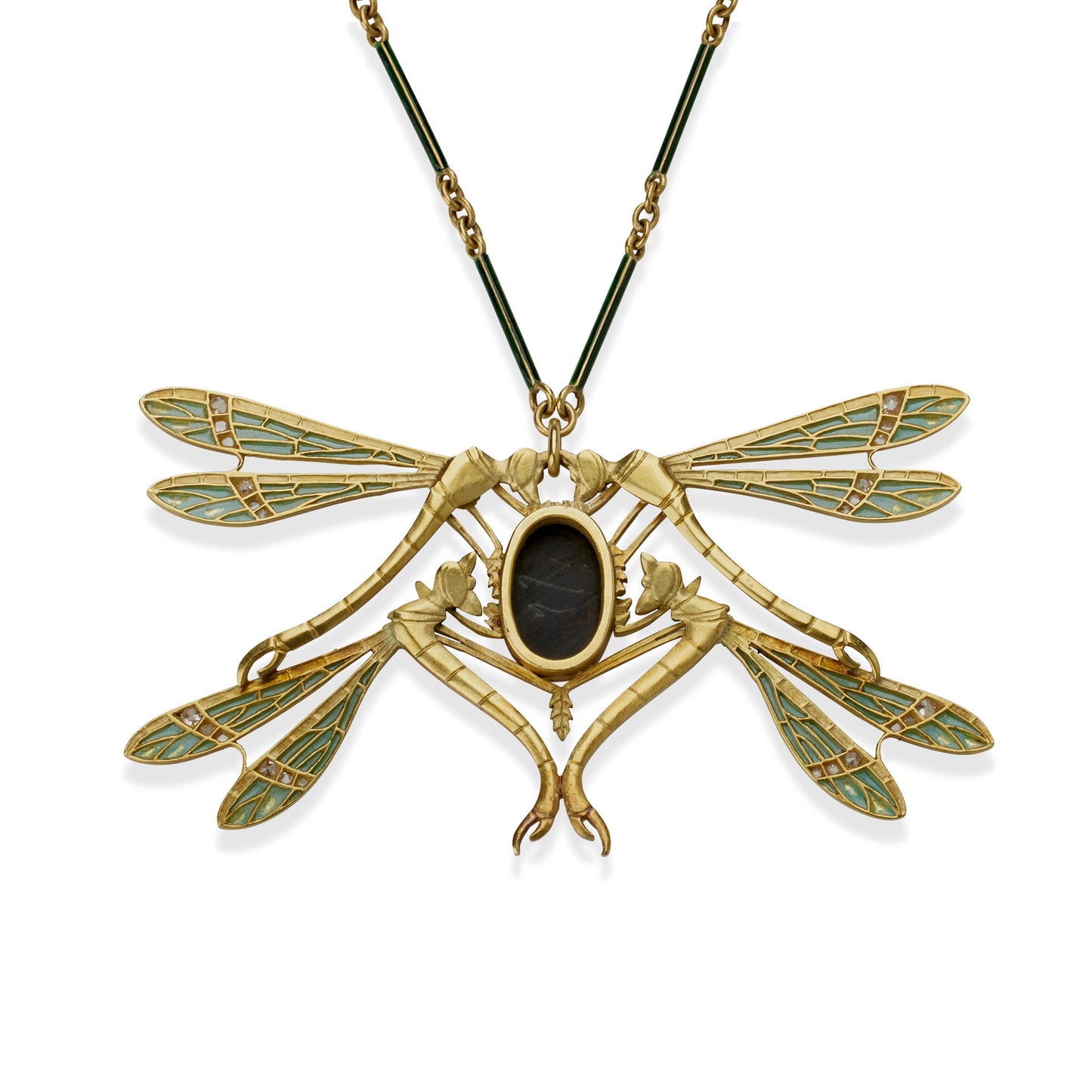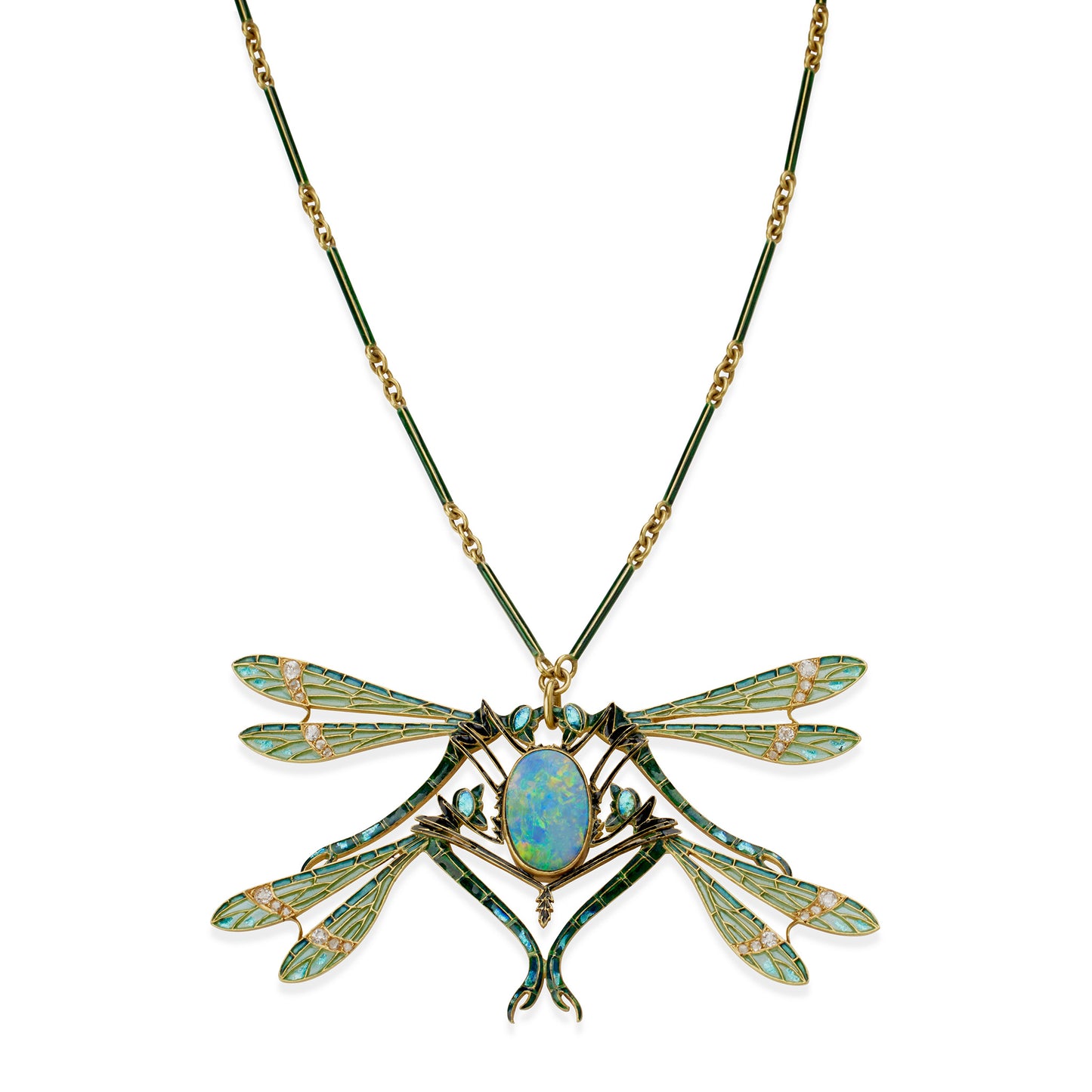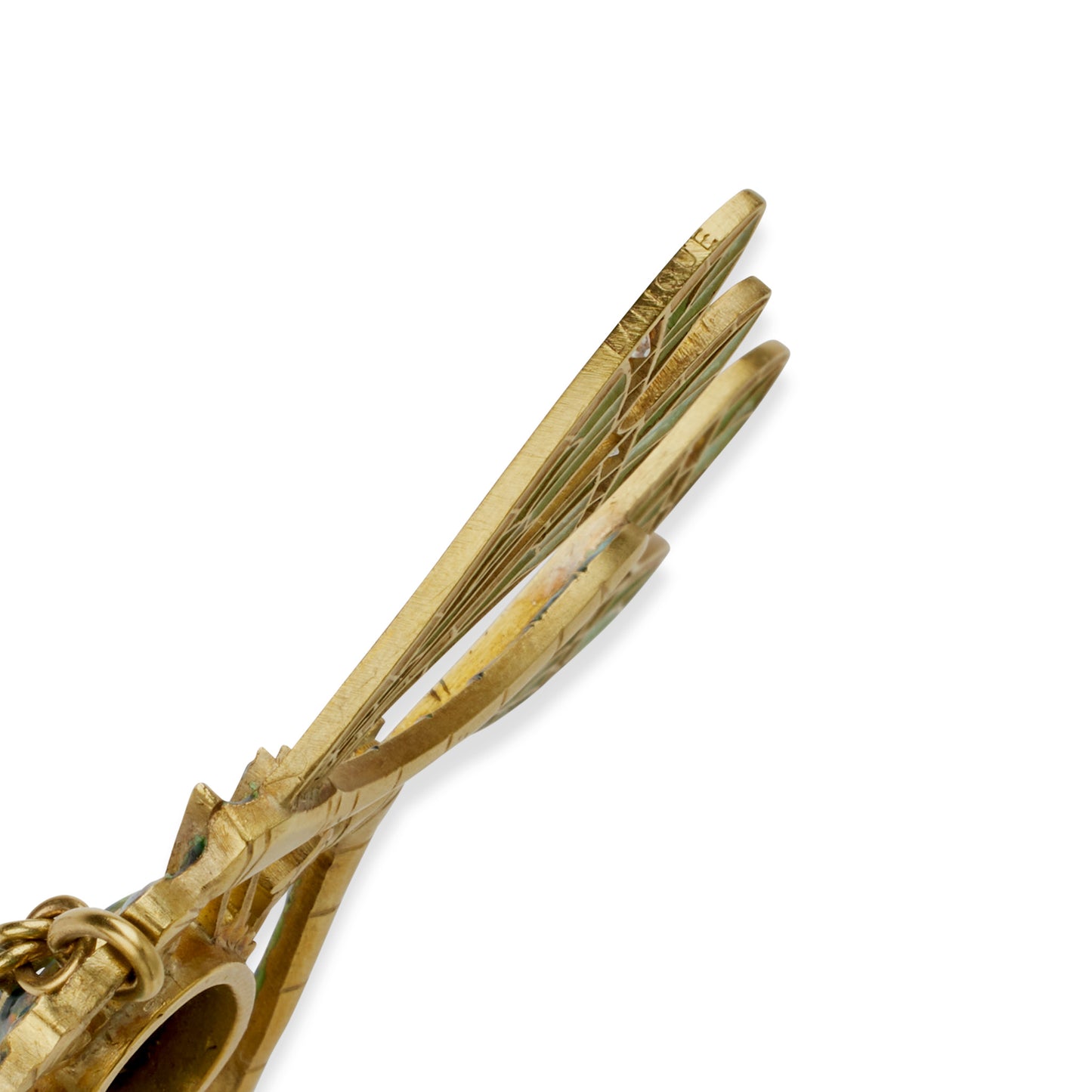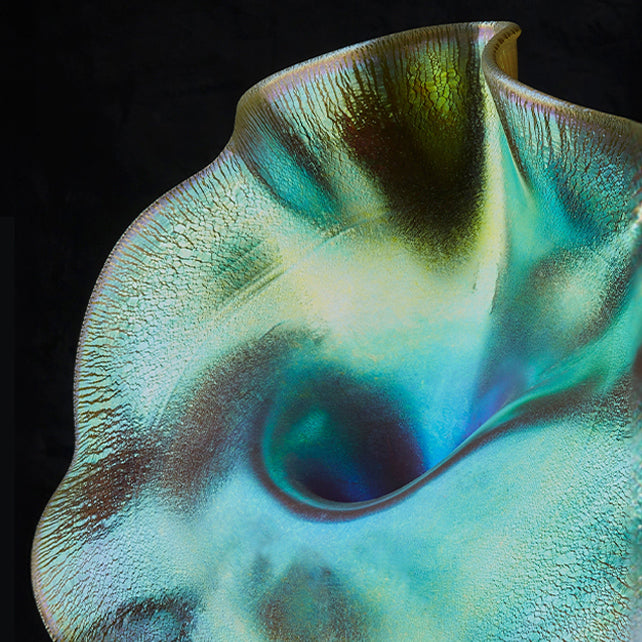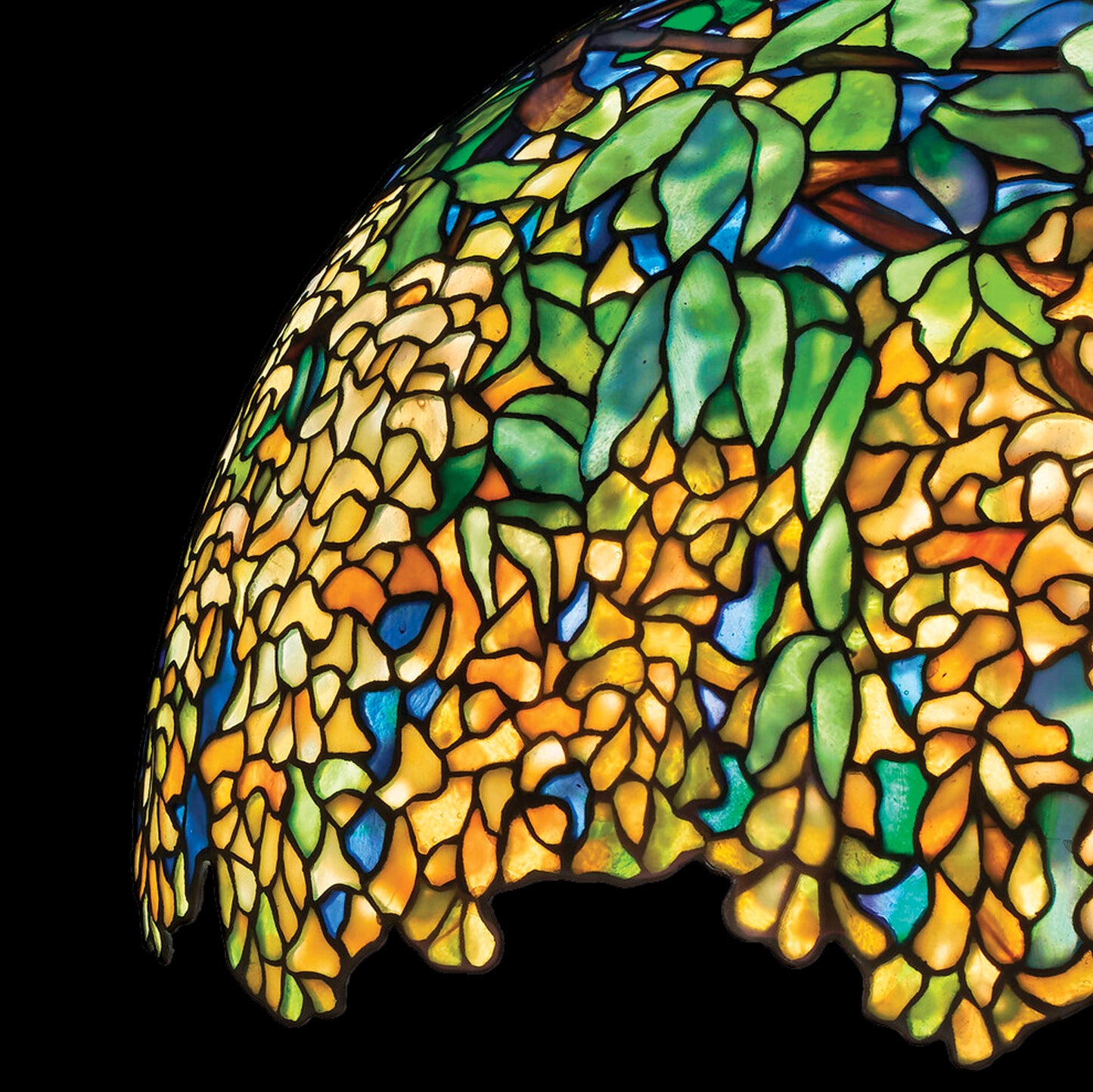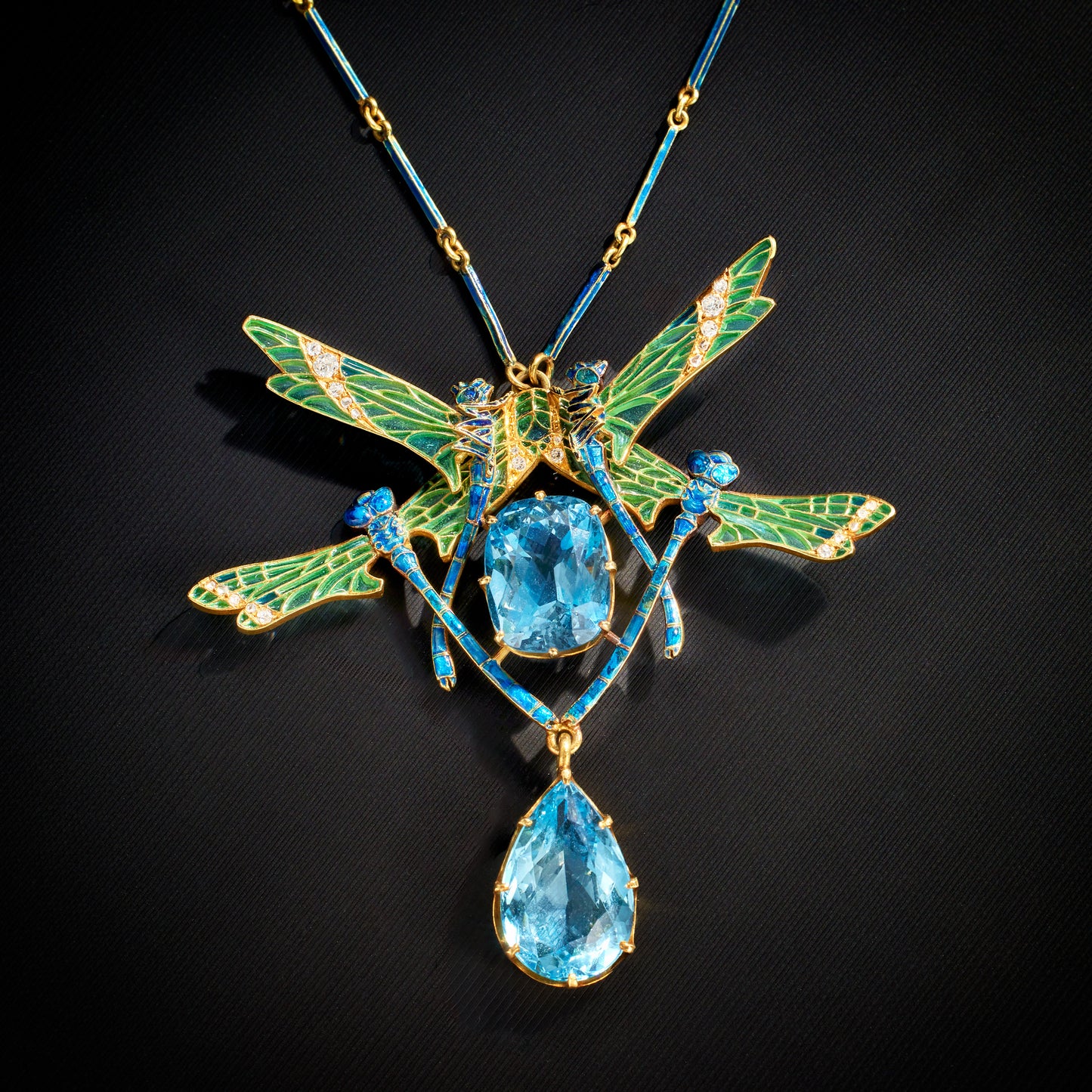René Lalique "Four Dragonflies" Pendant Necklace
Dating from circa 1905, this four dragonflies or quatre libellules pendant necklace was created in enamels, opal, diamonds and 18K gold by René Lalique. The pendant is designed as four dragonflies with blue paillonné enamel bodies and champlevé and plique-à-jour enamel wings with diamond bands, all perched on the rim of an opal pool, suspended from a conforming enamel baton link chain. A work of great delicacy refined technique, this Lalique jewel is an artistic evocation of nature's beauty, fragility and transience through color, composition and light effects.
Item #: YN-21574
Artist: René Lalique
Country: France
Circa: 1905
Dimensions: Chain 21", Pendant: 1.25" x 2.75"
Materials: 24 old mine and rose-cut diamonds (approximate total weight 0.20); Opal; Plique-à-jour and paillonné enamel; 18K Gold; Original signed and fitted box marked for Place Vendome
Signed: LALIQUE
Literature: Designs for variations of this Four Dragonfly or "Quatre Libellules" jewel dating from the 1903-1904 periods are pictured in Sigrid Barten, René Lalique: Schmuck und Objets d'Art 1890-1910, pp. 343-344, cat nos. 730, 731, 732, 733, 734, 736, 737.
Item #: YN-21574
Artist: René Lalique
Country: France
Circa: 1905
Dimensions: Chain 21", Pendant: 1.25" x 2.75"
Materials: 24 old mine and rose-cut diamonds (approximate total weight 0.20); Opal; Plique-à-jour and paillonné enamel; 18K Gold; Original signed and fitted box marked for Place Vendome
Signed: LALIQUE
Literature: Designs for variations of this Four Dragonfly or "Quatre Libellules" jewel dating from the 1903-1904 periods are pictured in Sigrid Barten, René Lalique: Schmuck und Objets d'Art 1890-1910, pp. 343-344, cat nos. 730, 731, 732, 733, 734, 736, 737.












